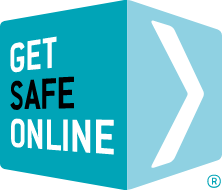The risks
- A legitimate-looking eCard, once it is clicked and/or any attachments downloaded, could contain malware which:
- Infects your computer or mobile device with spyware which can result in fraud or identity theft.
- Sends bogus emails, that appear to come from you, to all of your email contacts.
- Launches inappropriate websites, or displays inappropriate images.
- Bombards you with pop-up advertisements
- A legitimate-looking eCard may contain an invitation to click on a link to supposedly open your card, but is in fact phishing for personal or financial information.
- If you are sending an eCard, the website you use to do so may be bogus and involve you in sending eCards that contain malware.
Avoiding fake eCards
- Watch out for:
- Spelling mistakes in words or in your name.
- eCards not addressed to you, or to a random recipient name such as ‘Dear Friend’ or ‘Dear Customer’
- Errors in the message, for example, it says you sent a card, not received one.
- Senders who are not known to you (why would anybody you do not know send you a card?)
- Senders with obviously bogus names or, if they are from ‘Card Sender’, ‘Secret Admirer’ or similarly named senders.
- A web address that appears odd – for example’ www.http:/‘ instead of ‘ http://www.’
- Delete eCards from unknown sources.
- Never open an attachment from an unknown source.
- Never download from an unknown source.
- Never click on a link in an eCard from an unknown source.
- Remember than even eCards that appear to have been sent by someone you know, may have been sent to all of their contents by a Trojan.
- Do not reply to or forward eCards which you suspect may be bogus.
- Always read terms and conditions from eCard companies. (Some scams ask users to accept terms that include the fact that the company will access their address book and forward a message to everyone in it).
- Do not make purchases or charity donations in response to eCards.
- Check junk mail folders regularly in case a legitimate eCard gets through by mistake.
- If you are suspicious of an eCard, you can check if it is on a list of known spam and scam emails that some internet security vendors feature on their websites.
- Most Microsoft and other email clients come with spam filtering as standard. Ensure yours is switched on.
- Most spam and junk filters can be set to allow email to be received from trusted sources, and blocked from untrusted sources.
- When choosing a webmail account such as gmail, Hotmail and Yahoo! Mail, make sure you select one that includes spam filtering and that it remains switched on.
- Most internet security packages include spam blocking. Ensure that yours is up to date and has this feature switched on.
- Always ensure that you have antimalware software and a firewall loaded, updated and switched on.
